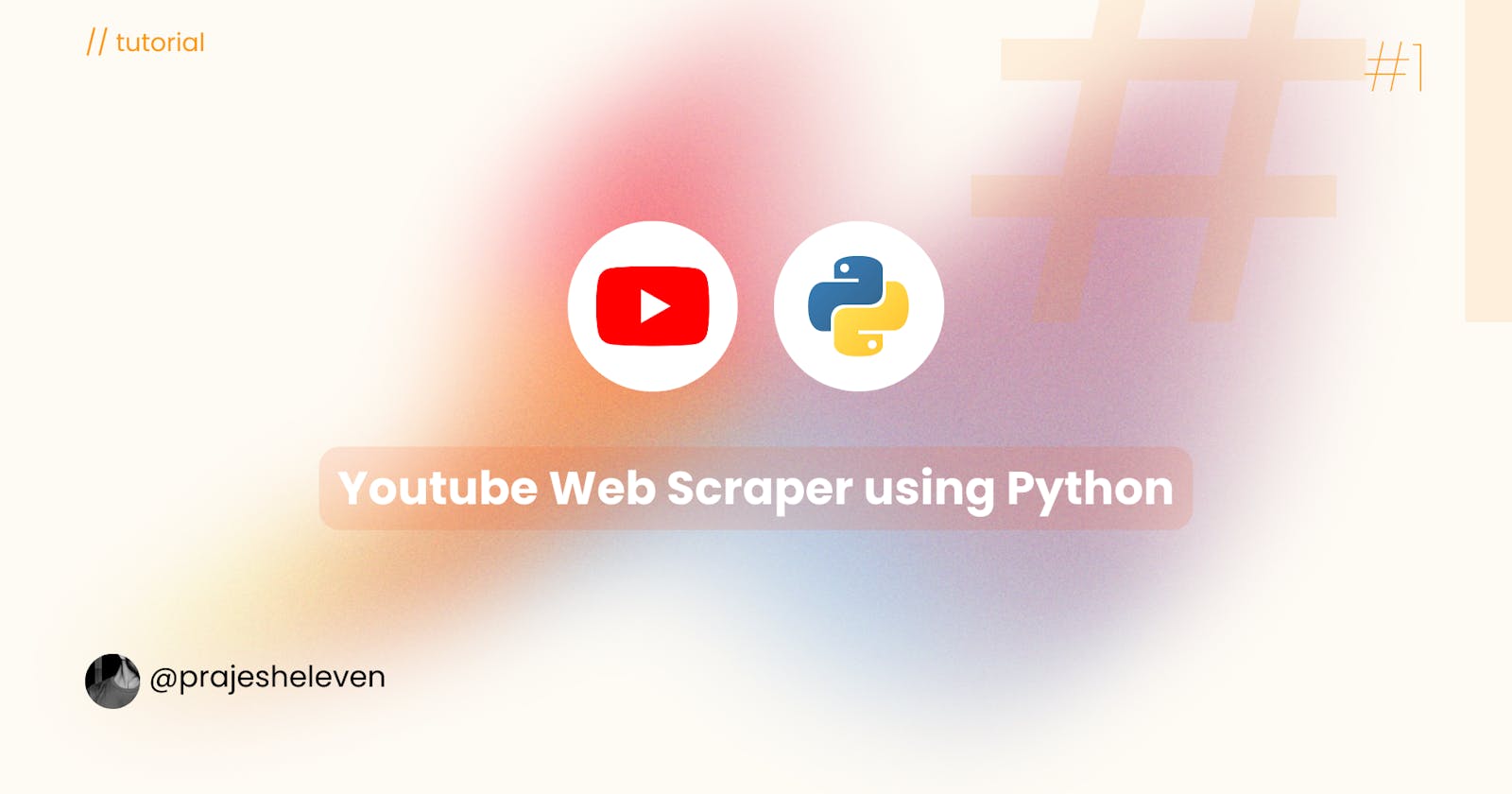Building a YouTube Web Scraper with Python: Fetching Data Using YouTube Data API and Saving to CSV with Pandas
Introduction:
In this tutorial, we'll explore how to build a YouTube web scraper using Python, leveraging the YouTube Data API to fetch data, and then saving it to a CSV file using the powerful Pandas library. By combining the capabilities of the YouTube Data API and Pandas, we can easily extract and organize YouTube data for further analysis or integration into other projects. Let's dive into the process of building this powerful web scraper!
You can check my code on Github.
Pre-requisites:
To follow along with this tutorial, ensure that you have Python installed on your machine. You'll also need to create a project in the Google Cloud Console, enable the YouTube Data API, and obtain an API key. Additionally, you'll need to install the google-api-python-client and pandas libraries using pip.
Step 1: Setting up API Credentials and Importing Libraries
First, let's import the necessary libraries, set up the API credentials, and create an instance of the YouTube Data API client:
import pandas as pd
from googleapiclient.discovery import build
api_key = "YOUR_API_KEY" # Replace with your YouTube API key
youtube = build("youtube", "v3", developerKey=api_key)
Step 2: Fetching YouTube Data using API and Storing it in DataFrame
Next, we'll use the YouTube Data API to fetch the desired data and store it in a Pandas DataFrame:
search_query = "python programming" # Customize the search query as desired
# Fetch data from the YouTube API
search_response = youtube.search().list(
q=search_query,
type='video',
part='id',
maxResults=10 # Customize the number of results to fetch
).execute()
# Extract video details from the API response
video_data = []
for item in search_response["items"]:
video_data.append('https://www.youtube.com/watch?v=' +
item['id']['videoId'])
# Create a DataFrame from the extracted video data
df = pd.DataFrame({
'video_url': video_data
})
Step 3: Saving Data to CSV
Finally, let's save the fetched data to a CSV file using Pandas:
csv_filename = "youtube_videos.csv" # Customize the filename as desired
df.to_csv(csv_filename, index=False)
Conclusion:
Congratulations! You've successfully built a YouTube web scraper using Python, the YouTube Data API, and Pandas. By utilizing the API, we fetched video data based on a specific search query and stored it in a Pandas DataFrame. We then used Pandas to effortlessly save the data to a CSV file, allowing for easy analysis and integration into other projects. Feel free to explore further possibilities by customizing the search query, extracting additional data from the API response, or applying data manipulation techniques using Pandas. Happy scraping!
Remember to comply with the YouTube API terms of service and usage policies when accessing and using the API. Ensure that you have obtained a valid API key and follow the guidelines and usage limits specified by YouTube.
Note: Properly authenticate your requests and be aware of the quota limits imposed by the YouTube Data API. Familiarize yourself with the API documentation to ensure you are using it in accordance with YouTube's guidelines.

